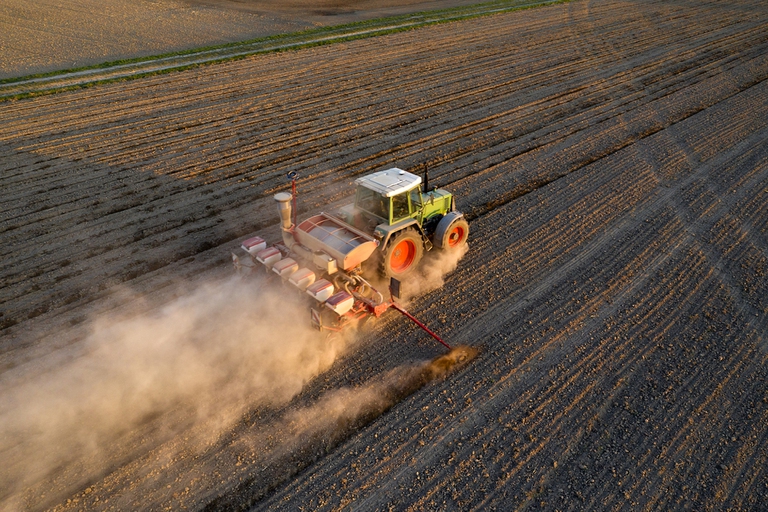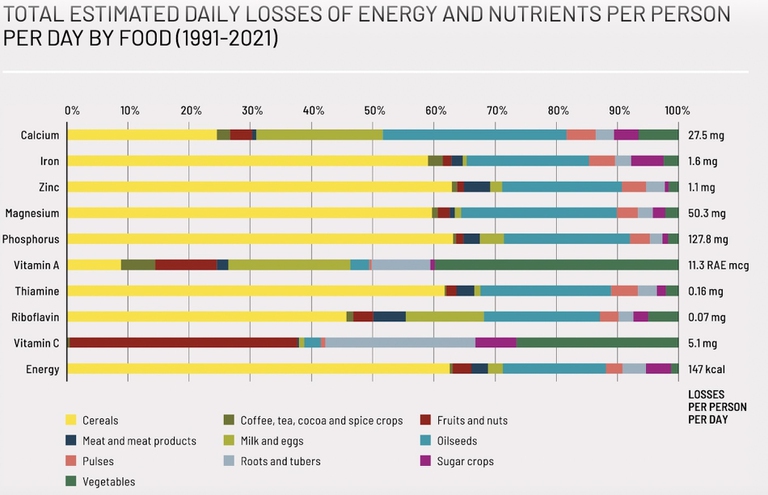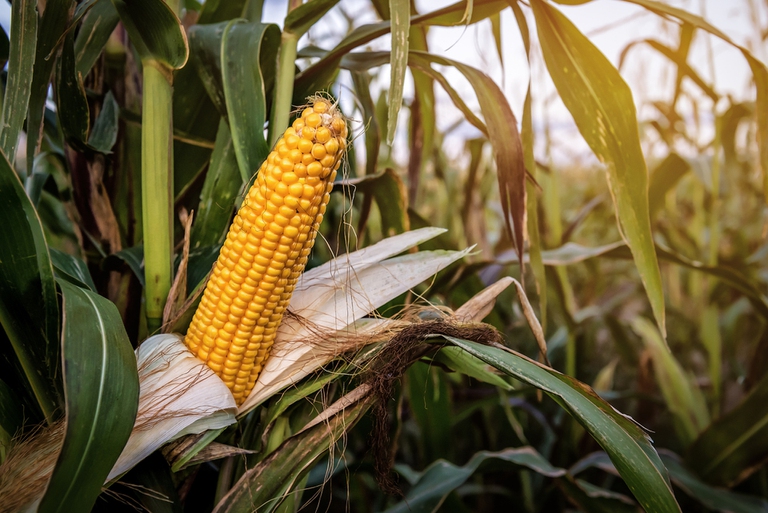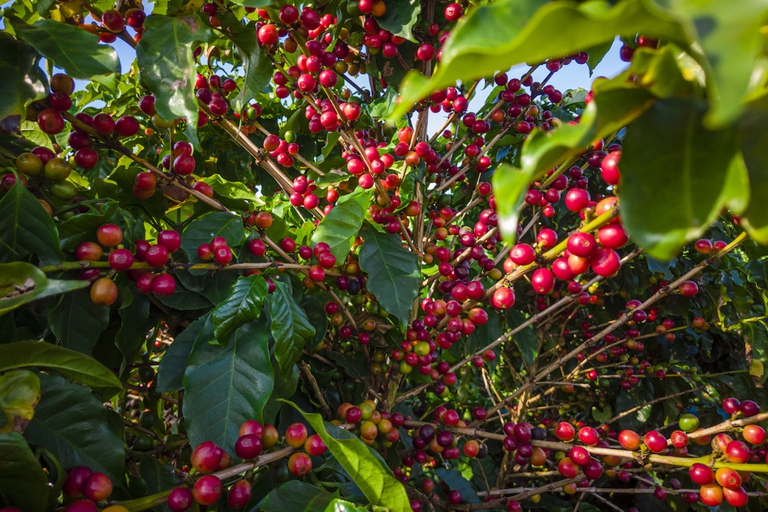https://www.lifegate.it/coltivazioni-a-rischio-cambiamenti-climatici
- |
- The increase in temperatures and the lack of water linked to climate change are increasingly compromising crops.
- In the future, the climate will negatively influence agriculture, especially in countries at low latitudes.
- Crops such as rice, corn, coffee and chocolate are among the most at risk with consequences on food security and migration phenomena.
A double thread ties theagriculture to the climate changes.On the one hand, i food systems are responsible for a third of the emissions of greenhouse gases of anthropogenic origin that cause the global warming:of these, most derive from the use of soil for agriculture (especially for crops and livestock) and by changes in intended use of the land.

On the other hand, agriculture, given its profound dependence on natural resources and climatic conditions, suffers the effects of climate change:violent rains, floods, periods of drought increasingly frequent and prolonged, fires, the increase in the proliferation of parasites and diseases and therising sea levels they damage production and compromise harvests.
Climate change penalizes agriculture in low-latitude countries
There geography of crops is destined to change and this will have effects on food safety and on migratory phenomena especially in countries where the survival of populations and the economy depend on few productions.According to theIpcc, agriculture will be constantly and negatively affected by climate change in the low latitude countries and, although some high-latitude regions may instead benefit from climate change, soil quality and water availability may limit this benefit. Yields are expected to decline as temperatures rise, especially in the tropical and semi-tropical regions, and that thearidity will increase in some areas of theCentral and Eastern South Asia, and of theWest Africa.Also the region of Mediterranean will continue to suffer a reduction in productivity.
Gthere effects of natural disasters on agricultural production, economic (and nutritional) quantification by FAO
Recently, the FAO published the first global estimate of effects of natural disasters on agricultural production, calamities that have increased from 100 to 400 per year from the 70s to the last twenty years.According to the relationship, in the last thirty years agricultural and livestock production has suffered losses for an estimated value of 3,800 billion dollars due to calamitous events, a figure equal to 5 percent of the world's agricultural GDP.The report covers crops and livestock, but the figures could be much higher if systematic data were available on the fisheries, aquaculture and forestry subsectors.

In particular, the numbers reveal that in the last thirty years i cereals they recorded an average loss of 69 million tons per year – equal to the entire cereal production of France in 2021 – followed by fruit, vegetables and sugar, with average losses around 40 million tons per year.For fruit and vegetables, the losses correspond to the entire 2021 production of Japan and Vietnam.Disasters inflicted the greatest collateral losses on low-middle income countries, up to 15 percent of their total agricultural GDP.On a global scale, estimated losses due to disasters in the crop and livestock subsectors averaged approximately 147 kcal per capita per day over the last 31 years, a figure that corresponds to approximately 6-7 percent of average energy needs of men and women.
Which crops are at risk in the world with climate change
Corn and wheat
Second a NASA study published in the journal Nature Food, climate change could affect the production of corn And grain already in 2030 in a scenario with high greenhouse gas emissions.It is expected that corn yields will decline by 24 percent, especially in the tropics, while the grain could potentially record a growth of approximately 17 percent expanding to higher latitudes.It should be highlighted that, if on the one hand, a limited increase in the concentration of atmospheric CO2 could improve crop productivity, on the other nutritional quality decreases of some foods:for example, in wheat grown at concentrations of CO2 in the atmosphere that are approximately 32-42 percent higher than the current ones, there can be 5.9-12.7 percent of proteins less, 3.7–6.5 percent less than zinc and 5.2–7.5 percent less than iron.

Rice
The cultivation of rice it is threatened by floods, droughts, rising sea levels and rising temperatures.Second a study, in the future in China, the world's largest rice producer, the growing period of rice will shorten and yield will decrease.In summer 2023 theIndia, the world's second largest producer of rice, has blocked exports of this cereal because production has been compromised, in some areas, by the abundance of rainfall, in others, by the scarcity of rainfall.In Vietnam rice crops have been transforming into shrimp farms for some time.
Coffee and cocoa
According to IPCC estimates, by 2050, the land dedicated to the production of coffee will decrease worldwide.In Brazil, the world's largest coffee producer, a 3°C temperature increase would reduce the area suitable for coffee production by two-thirds in the major growing states of Minas Gerais and São Paulo and make it completely impossible in others. Climate change will also have a significant impact on the production of by 2050 cocoa in West Africa where currently Ghana And Ivory Coast they produce more than half of global cocoa.

Wine
According to data fromOiv, the 2023 vintage wine, with 244.1 million hectoliters produced in the world, is the lowest in the last sixty years (-7 percent compared to 2022).For some time we have been witnessing a downward trend for wine due to climate change, including floods, frosts and droughts which compromise the production of grape.THE'Italy, among the most affected countries, lost its position as European wine producer in 2023;reduced production even for large producers south of the equator: Chile, Australia, South Africa, Argentina.
Climate, crops at risk in Italy
According to Coldiretti estimates, in 2023 in Italy the damage to agriculture related to extreme climate events they surpassed the six billion euros.In particular there is a cut in the 10 percent of the production of grain, of 14 percent than that of wine grapes and until 63 percent from the pears, while the harvest of honey fell by 70 percent compared to 2022.As for the rice (Italy produces 50 percent of Europe's), 2023 recorded the lowest production in the last twenty years.
